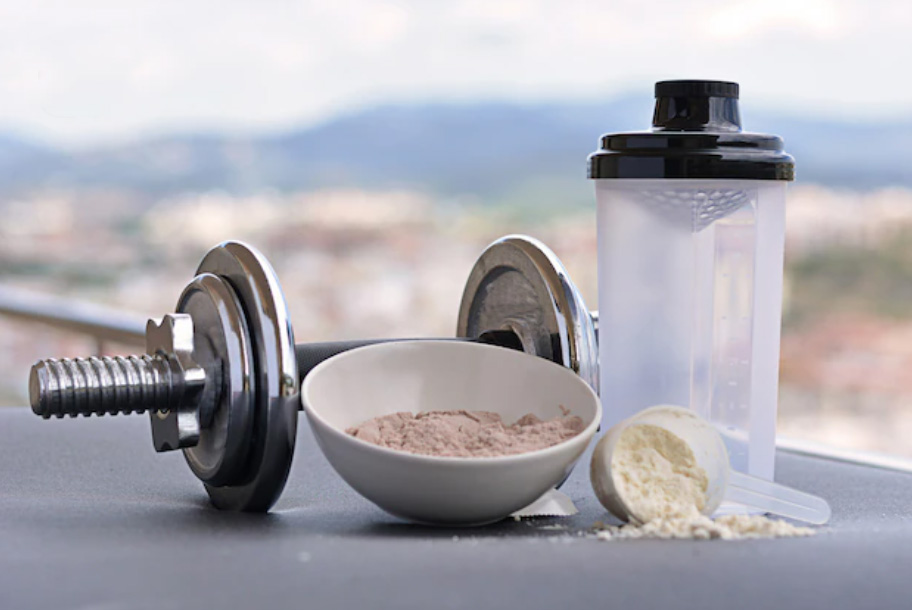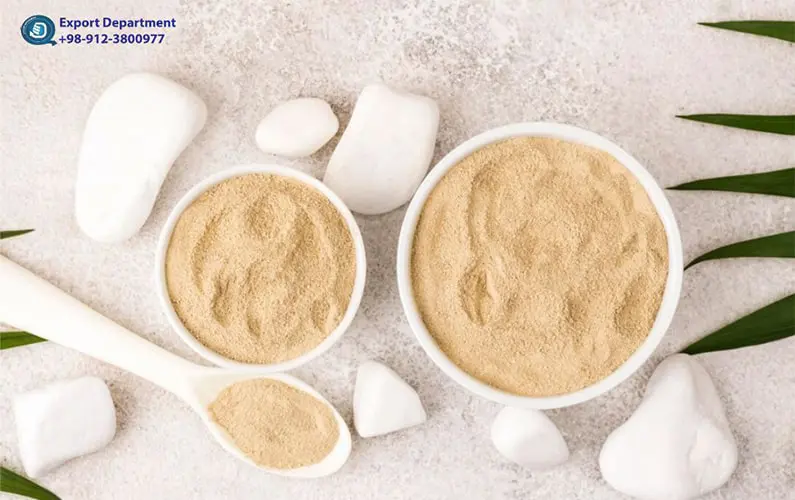A Comparative Analysis of Whey Protein Concentrate, Sweet Whey Powder, and Milk Protein Concentrate
This article will delve into the world of Whey Protein Concentrate (WPC), Sweet Whey Powder (SWP), and Milk Protein Concentrate (MPC), exploring their compositions, applications, and the unique benefits they offer.
In the ever-evolving landscape of nutritional supplements and food industry additives, it's crucial to understand the distinctions between various protein products derived from dairy processing. This article will delve into the world of Whey Protein Concentrate (WPC), Sweet Whey Powder (SWP), and Milk Protein Concentrate (MPC), exploring their compositions, applications, and the unique benefits they offer.
As health awareness grows and fitness trends gain momentum, dairy byproducts like Whey Protein Concentrate (WPC), Sweet Whey Powder (SWP), and Milk Protein Concentrate (MPC) are becoming stars in their own right. Each plays a unique role in the sports nutrition and food manufacturing industries due to their distinct protein and lactose contents. Understanding these differences is key for both consumers looking to optimize their diets and producers aiming to maximize the application and efficiency of dairy constituents in their products.
Whey Protein Concentrate (WPC): The Athlete's Choice
Whey Protein Concentrates (WPC) stand out as a significant category of whey-based food ingredients, finding versatile applications in confectionery products, cereal and nutrition bars, processed cheeses, baked goods, sports beverages, and formulations for muscle gain. Through the process of ultrafiltration (UF), WPC powders with protein concentrations ranging from 35% to 65% are crafted, effectively eliminating lactose, minerals, and non-protein nitrogen (NPN) from the whey. This purified whey is then subjected to spray-drying. Notably, WPC powders with exceptionally high protein content, reaching up to 90%, can be achieved through diafiltration. In this method, the whey protein retentate obtained during UF processing is diluted with water, facilitating the removal of nearly all lactose and minerals.
Applications of WPC (Whey Protein Concentrate):
Different types of whey protein are used in supplements. Two of the most common forms are whey isolate and whey concentrate.
-
Muscle Benefits:
- Enhances muscle volume and strength.
- Improves muscle regeneration.
- Assists in weight reduction.
- Strengthens the body's immune system.
- Provides sustained energy.
-
Food Products:
- Used in the production of various food items, including bread, cakes, and biscuits.
- Commonly used in powdered forms.
-
Baby Milk and Nutritional Supplements:
- Included in formulations for baby milk and nutritional supplements.
-
Versatile Culinary Uses:
Applications extend to various culinary scenarios, including:- Soups and Sauces
- Spreads & Dips
- Salad Dressing
- Creamy Desserts
- Frozen Confections

Sweet Whey Powder (SWP): The Versatile Ingredient
Sweet Whey Powder (SWP) is derived from the drying process of sweet whey obtained during cheese production, resulting in a loose and uniform powder. This versatile product enhances the nutritional value and texture of food items to which it is applied.
Applications of SWP encompass a wide array of uses:
-
Ice cream: SWP contributes to the formulation by providing dairy solids and maintaining a standard formula.
-
Dairy products: As an ingredient, SWP imparts flavor and sweetness, showcasing greater solubility compared to milk powder.
-
Bakery and confectionery: SWP's solubility and involvement in the Maillard reaction during baking contribute to an appealing golden-brown color and sweetness in various products.
-
Sport and nutrition: SWP is utilized for its flavor and solubility in formulations, and its high concentration of sugars aids in better recovery after intense exercise.
-
Biscuits and snacks: SWP serves as a foundational ingredient for functional formulations, adding value to these popular food items.
-
Cooking: SWP optimizes the texture and flavor of sauces and creams, enhancing the overall culinary experience.
WPC vs SWP
Whey Protein Concentrate (WPC) emerges as a byproduct of cheese processing, distinguished by its notable protein concentration. Comprising protein, lactose, and fat, WPC's protein content ranges from 35% to 90%, making it a highly sought-after choice for athletes and bodybuilding enthusiasts. Recognized for its versatility, WPC serves as a crucial component in food supplements and protein supplements tailored for bodybuilding and various sports. Beyond the fitness realm, WPC plays a vital role in the broader food industry, contributing to the production of diverse protein-based products.
In contrast, Sweet Whey Powder (SWP), also stemming from cheese processing, features a lower protein concentration and a heightened lactose content. Primarily utilized as an additive in the food industry, particularly in the creation of products like confectionery, SWP presents a distinct profile from WPC. The key disparity between WPC and SWP lies in their varying protein and lactose levels, influencing their respective applications. This exploration unveils the unique characteristics of WPC and SWP, providing insights into their composition and diverse uses.
Milk Protein Concentrate (MPC): A Balanced Protein Source
Milk Protein Concentrate (MPC) is typically crafted through membrane technology, embodying both casein and whey proteins in the proportional balance found naturally in milk. Spanning a protein content spectrum from 42% to 85%, MPC exhibits a reciprocal relationship with lactose levels – decreasing as protein content rises. Derived from skim milk, MPC production involves ultrafiltration and/or diafiltration, coupled with evaporation and drying technology. The resultant mixture of proteins, lactose, and minerals that did not traverse the membrane (permeate) remains in the retentate. To achieve protein concentrations surpassing 90% in the final powder, diafiltration or retentate washing becomes imperative. The casein fraction, existing in its native micellar form, carries substantial quantities of calcium and phosphate. Valued for both nutritional and functional attributes, MPC's high protein and low lactose ratio render it suitable for fortifying beverages with protein and formulating low-carbohydrate foods.
MPC applications:
Milk Protein Concentrate is utilized in nutritional drinks, nutritional and dietary products, care products for the elderly, baby formula, protein bars, yogurt, mixed cheeses, cultured products, desserts, bakery, and confectionery.
MPC proves financially beneficial for dairy producers, as a smaller quantity is required compared to milk powder to achieve a specific dry matter, particularly evident in applications like yogurt. The appealing high protein and low lactose ratio of MPC make it a sought-after ingredient for protein-enriched beverages, foods, and low-carbohydrate products.
Its functionality extends to providing stability against heat, as well as solubility and dispersibility during use, making MPCs valuable in dairy mixtures, foaming, and whipping. The proteins in MPC play a crucial role at the oil/water interface, forming and stabilizing fat emulsions in sausages, processed meats, dairy beverages, soups, sauces, and bakery products. Additionally, the combination of lactose and proteins in MPC contributes to creating an attractive color in bakery items such as sweets, cakes, and cookies due to the browning effect.
WPC vs SWP vs MPC
In fact, WPC is done on the whey product with filtration methods (ultrafiltration and diafiltration) to find more protein and less lactose, but the protein is whey protein. But MPC is done on the milk product with filtration methods (ultrafiltration and diafiltration) to find more protein and less lactose, that's why its protein is both casein and whey. And SWP is performed on the whey product, but it does not go through filtration and is directly powdered through a spray dryer, as a result, it has less protein and more lactose.
Read More: Understanding the pH of Milk: A Crucial Element in Dairy Quality
Conclusion
The nuanced differences between WPC, SWP, and MPC play crucial roles in their respective niches. WPC leads in the fitness realm as a high-protein supplement, SWP sweetens and enhances food products with its lactose content, and MPC strikes a balance between nutrition and functionality with its blend of milk proteins. Understanding these products' unique characteristics allows for their strategic application, ultimately benefiting those seeking enhanced nutritional profiles in their diets and producers striving for efficiency and quality in food products.
To contact the Chaltafarm Dairy Export Department, please refer to the Contact Us section.

.svg)


.webp)
